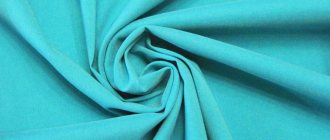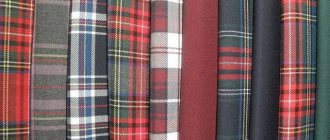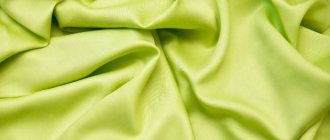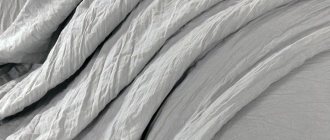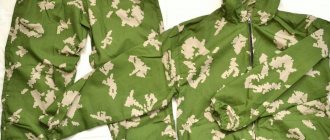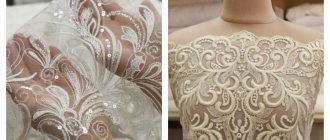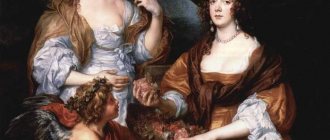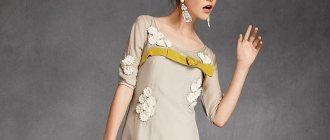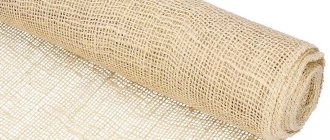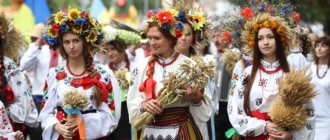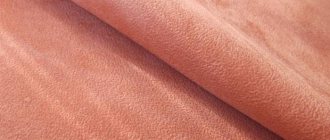Home / Different composition
Back
Published: 01/10/2021
Reading time: 2 min
0
69
Tartan or Scottish check has been popular in different eras among lovers of both classics and fashion trends. Initially, this was the name for the method of weaving fabric: the path of each thread is the intersection at right angles of two others, first from above, then from below. The cage involved wool and cotton threads, differing in color and width. Modern tartan is a checkered pattern displayed on any type of textile.
- 1 The emergence of ornament
- 2 Types of colors
- 3 Production technology
- 4 Composition and properties of fabrics with tartan pattern
- 5 Using tartan
- 6 Conclusion
History and varieties
More than 2 thousand years ago, the inhabitants of Scotland came up with a way to make practical and warm material for clothing from dyed threads. Craftsmen from each region came up with their own special patterns and thread colors for the fabric. Therefore, the colors and patterns of tartan fabric served as a kind of passport for its owner. They were used to determine the place of birth, membership in a specific clan, and social status of a person.
General view of the fabric
The more complex the pattern and the more shades in the tartan, the higher the kilt owner was in position. For example, ordinary people wore skirts made of plain fabric, dark checkered patterns were used for hunting suits, royal tartan contained 7 bright colors from natural dyes.
Since the mid-18th century, after the Jacobite uprising, tartan was banned. Only in 1822, when the British King George IV wore a checkered kilt to meet his subjects, did national clothing return to the country. Since that time, the cell began to conquer the world and gained popularity. Thanks to the use of synthetic dyes, new color combinations of patterns are constantly being created.
All checkered designs are registered in special tartan registers:
- Scottish Tartans World Register is a closed list. It contains 3.5 thousand unique tartan designs that have long belonged to royal dynasties, families, cities, and educational institutions.
- Scottish Register of Tartans contains 7 thousand patterns. Anyone can come up with and register a new checkered pattern in it.
The most popular types of plaid are:
- the Caledonia tartan, which has a recognizable blue-black-green check on a red background;
You might be interested in Description of the technical characteristics of Greta fabric: what the material is made of
Caledonia pattern
- stripes of blue, green, gray muted colors on a black background distinguish the Black Watch fabric, which was allowed to be worn by royal troops during the ban on tartan;
Material "Black Watch"
- The Nova tartan with black, white and red stripes on a light brown background is the identifying mark of the Burberry brand;
Fabric "Nova"
- “Glenchik” consists of black and white graphic patterns that form a cellular appearance;
Glenchik material
- the “Houndstooth” pattern with the corners of the cells elongated diagonally is considered a classic for creating a respectable image;
Tartan "Houndstooth"
- A special feature of the Vichy cell is its bright small cells.
Vichy pattern
Please note! Tartan today refers to any checkered fabric, including that obtained by covering non-woven material or knitwear with a pattern.
Types of colors
Scottish check or tartan fabric is symmetrical with respect to lines located horizontally, vertically or diagonally. Weaves that are not symmetrical with respect to the diagonal are rare. The color and thread of the warp and weft in such a tartan are different from each other, which is not typical for the material.
The tartan color is coded with a special abbreviation that describes the color and number of threads used to form the stripe. For example, R24 means a red shade recreated using 24 threads. The different sequence of weft and warp will be described by two letters.
The table shows the most popular tartan colors.
| Name | History of origin |
| Black watch - black watch | In the 18th century, George II created a special direction that protected the British crown for 270 years. Over the years, 164 battles were brilliantly fought. The noble pattern has survived to our time, so every citizen has the opportunity to touch history. |
| Nova Check or Burberry | Fashionable 4-color fabric, including black, red, white and sand. The famous British clothing brand began using it in 1924 on the lining fabric of trench coats. |
| Glencheck | A discreet tartan pattern, one of the ancestral patterns of the Countess of Seafield. The Prince of Wales liked the color palette, which is why it received the secret name of the same name. |
On the market you can find tartan, suitable for both office and holiday outfits.
Characteristics
Let's figure out what tartan is from the point of view of its manufacture.
Despite the variety of types, any tartan is a fabric with a diagonal line, relative to which the colors are located symmetrically. The creation of a tartan is based on a set of dyed threads arranged in a certain order. To create a diagonal, the threads are intertwined first in a forward and then in a reverse sequence. The twill type of weave gives Scottish tartan strength and density. Clothes made from it do not wrinkle and last a long time.
Important! Classic tartan is made of wool. Therefore, it is soft, warm, and absorbs water well.
Wool tartan
During mass production, cotton, silk, synthetic or mixed fibers are added to tartan fabric to change its texture and characteristics. For example, adding cotton increases wash shrinkage and creasing. Artificial fibers provide increased wear resistance, but reduce hygroscopic properties.
Properties
Twill weave gives tartan the following qualities:
- density;
- strength;
- elasticity. Such fabrics wrinkle little;
- high resistance to abrasion.
Other characteristics depend on the composition of the fibers.
- Classic tartan is natural wool. It is very warm and soft.
- Checked cotton fabrics are also distinguished by their softness, excellent ability to regulate heat transfer and hygroscopicity. The disadvantage is the likelihood of shrinkage and a high degree of creasing.
- Synthetic materials are very durable and wear-resistant, do not shrink, wrinkle a little, but practically do not absorb moisture and provide almost no warmth, so wearing such clothes can cause discomfort.
On a note
Also, mixed fabrics of plain weave, on which various checkered prints are applied, can now be called tartan.
Scottish check in clothes
Checked fabric has long ceased to be associated only with the national Welsh style. Tartan models have no age, gender or stylistic restrictions. Almost all items of men's, women's and children's wardrobe are sewn from tartan.
Checkered tie
Checked clothes are combined with plain fabrics, leather goods, and jeans. A win-win option to look elegant is to match it with accessories, shoes, and bags in black colors.
You might be interested in this. Detailed description of “Grass” cotton from Kamtex
The emergence of ornament
Tartan fabric is a material for making the kilt, the national garment of the Scots. It was sewn from checkered woolen fabric. The kilt was not just an item of national clothing; by the design on it one could determine which clan a person belonged to.
Fact: The tartan cage was discovered near the town of Falkirk approximately 1,700 years ago. Until the 19th century, natural ingredients were used to dye threads: alder for black, heather for orange, blackberry for blue, birch for yellow.
Historically, the pattern on fabric was related to locality and dye availability. Then the drawing began to correspond to the clan. Historians believe that the trend is associated with the era of romanticism, when interest in national culture began to increase.
Tartan skirt: what to wear with it
There is a checkered skirt in every woman's wardrobe. It comes in two main types:
- With pleats around the waist or cut with pleats from the hip line. Suitable for young girls and women with an ideal figure.
Pleated skirts
- Cut on the bias. Thanks to the diagonal weave of the threads, this cut ensures a perfect fit on any figure.
Bias-cut skirt
Manufacturers produce plaid skirts of different lengths: from mini to maxi. Short skirts are suitable for students, medium length - for almost all women, regardless of age and status. Long ones are suitable for offices and walks.
Important! Tartan skirts dominate any ensemble, so the rest of the items are chosen very carefully.
Such skirts are worn with blouses, turtlenecks, T-shirts, hand-knitted sweaters, and denim jackets. The main condition is that the top of the silhouette be monochromatic.
In cold weather, thick dark tights are worn under the skirt, and a short jacket or jacket is worn on top of a single-color blouse.
Complete the look with Jane style shoes, elegant lace-up ankle boots or boots.
Glen Check print, also known as “Prince of Wales”
The name "glenchek" comes from the word Glenurquhart - this is the name of the valley in Scotland where this print was invented. They say that Countess Seafield invented it in order to distinguish her workers from all others. The Countess was a New Zealander, and therefore she was forbidden to come up with her own colors for the traditional tartan. She had to come up with her own pattern.
The “glencheck” print was, as they say, at home - it was popularized by Edward VIII himself, the Duke of Windsor and the Prince of Wales. He was not at all embarrassed by the fact that the “glencheck” was invented for commoners, and he appeared in society so often in suits with such a print that everyone began to imitate him.
Glencheck print, aka Prince of Wales
Coat with enlarged Glentcheck print
Plaid dresses - both for the feast and for the world
Check is deservedly one of the popular prints. A woman will attract attention in any setting if she wears a plaid dress. The main thing is that the cage pattern is appropriate to the situation and skillfully complemented with accessories.
Elegant look with a plaid dress
Tartan fabric looks organic in the following styles:
- in the form of a sundress;
- case;
- loose shirt;
- strict direct;
- widened towards the bottom.
Maxi models visually slim the figure. They are sewn with a collar and long sleeves. An evening option is a dress with a diagonal checkered pattern, with or without short sleeves. Shoes, handbag, belt, jewelry for the outfit are selected in one color, matching the color of the pattern.
For medium-length models, straight or A-line styles with a thin strap are suitable. Midi length is also suitable for wool sundresses and shirt dresses.
Summer sundresses with straps, styles with a cut-off waist, and sleeveless are sewn with a miniskirt, often full.
Note! The turn-down collar emphasizes the elegance of the outfit. Made from material in a contrasting checkered color, it becomes a stand-alone highlight.
Turn-down collar
The dress's companion items should be plain, for example:
- wool short coat;
- cardigan with tight knit;
- poncho in a contrasting color to the plaid;
- leather or denim jacket;
- light raincoat;
- stylish fur cape.
You might be interested in Description of cloth fabric: composition and properties of the material
Shoes include ballet flats, ankle boots, and suede boots. It is appropriate to wear over the knee boots with the mini version.
Using tartan
Classic and modern versions of tartan fabrics are used for sewing suits (men's and women's), skirts, trousers, and warm shirts. The fabric is used for the manufacture of furniture covers, curtains, and drapes. Thick woolen fabric is suitable for sewing bags and clutches. Modern technology makes it possible to produce checkered wallpaper on an appropriate textile basis.
Attributes of Scottish style can be found on the fashion catwalk. To make a traditional kilt, you need at least 7 meters of fabric, as well as knowledge of folding technology. The lightweight modern version is made from less dense material, with the addition of synthetic fibers, no more than 4.5 meters long. This outfit cannot be called familiar; it can be seen at a fashion show or other social event. Scottish plaid is pleasing to the eye on rugs and bedspreads. The colors make the interior cozy and elegant.
Tartan in the form of fabric for a school uniform
Increasingly, checkered fabrics are being chosen for sewing school uniforms. This form has a strict, classic look and at the same time does not look boring. Schoolgirls wear plaid skirts, dresses, sundresses, and jackets. Boys wear jackets, caps, ties, and checkered bowties.
School check uniform
The choice of tartan for schoolchildren is related to the properties of this fabric:
- practicality, because it is uncritical to put a dirty spot on a multi-colored fabric;
- durability and wear resistance;
- combination with plain things.
Dog tooth print
Essentially, this is the same “crow’s foot”, only even larger. In addition, the cell itself is deformed, its angle is elongated.
Dog tooth print
Dog Tooth Print Coat
Suit and coat with print from the Chanel collection
Read: Fashionable frames spring-summer 2019
Shirt dress: what to wear with
Pepita print
It is very similar to the “dog tooth” check, and therefore these two prints are often confused. At first glance, the difference is not obvious, but this does not mean that it does not exist. From our point of view, pepita looks more like a starfish than a dog's tooth.
Pepita print
What to sew from checkered fabric
Having seen tartan in a store or at an exhibition site, many succumb to its charm and buy a piece. There are many options for updating your wardrobe by creating clothes from plaid fabric, including:
- you can sew another skirt, for example in the “Boho” style;
- Classic-style plaid trousers in calm colors will look elegant;
- a neckerchief or scarf will become a harmonious accent in any suit, even a man’s;
- an office suit and sundress will never be superfluous;
- It’s easy to make a vest for a man;
- The same models for mother and daughter look stylish.
Family in similar models
Important! There is no need to wear more than 2 items with a check and combine tartans with different patterns. Such clothes look tasteless.
People who want to keep up with fashion choose things with checkered patterns. And this is no coincidence, because tartan is a thorough and noble fabric that is timeless.
Production technology
The Scottish origin of the tartan check is confirmed by an old tattered piece from 327, which is on display at the National Museum of Scotland. The canvas was based on sheep's wool in light and dark shades. The modern texture is significantly different, and the color range is much wider.
Tartan is the observance of a special production technology. From historical descriptions it follows that earlier the dyeing of threads was carried out separately, and then the design of an intricate pattern began.
Consistency ensured that the bright colors were retained as well as the material's high strength. The resulting colors corresponded to the natural dyes used. The shade reflected the area where the weaver lived, since color mixing, of course, occurred, but the main color remained unchanged.
Modern tartan is a fabric made by twill weaving multi-colored threads creating horizontal or vertical stripes. Creating a unique style is directly related to the number of colors used.
Diamonds
This is our old acquaintance from the school geometry course - a quadrilateral with equal sides. On his so-called We will not dwell on the psychedelic and harlequin versions of this print, we will only talk about the print...
Argyle print
The pattern can consist of rhombuses or squares arranged in a checkerboard pattern. Most often, a thin strip of a contrasting color is applied to the rhombus. The name of the print comes from the name of the county of Argyll.
Argyle print
The argyle print became popular in the twentieth century thanks to the Pringle of Scotland brand, which produced expensive knitted polos and vests with this pattern. The number of colors of this print is countless, but we can say for sure that aristocrats love it very much.
Argyle print dress
In addition, argyle is, if not mandatory, then a very desirable element of the preppy style.
Madras check
The homeland of the Madras cell is India. In the mid-17th century, the famous East India Company was looking for quality textiles in India and found it in the small fishing village of Madraspatnam. The company's management promised local residents tax exemption for thirty years, and within a year, 400 families moved to Madras to produce textiles.
The sought-after Madras check came to America in 1718, when the East India Company donated it to Yale University (then called the Collegiate School of Connecticut), and in 1897, the Sears company offered to include a shirt made from cotton with a Madras check in its catalog American Consumer Catalog.
In 1930, Madras plaid clothing became a symbol of wealth, because only the wealthiest Americans could afford to buy it during the Great Depression.
A Madras check shirt is a symbol of respectability
Madras plaid skirt by Dries van Noten
That's all for today, as the British say. Now, when buying clothes in plaid, you will understand what's what. Wear it! Firstly, because it's beautiful. Secondly, because real tartan made of wool is warm and comfortable.
Tatiana Poschechnykh
